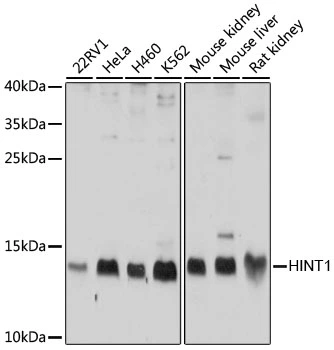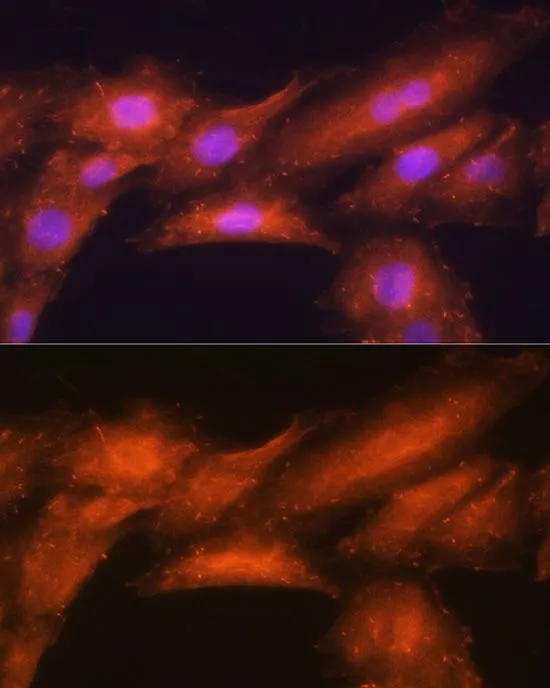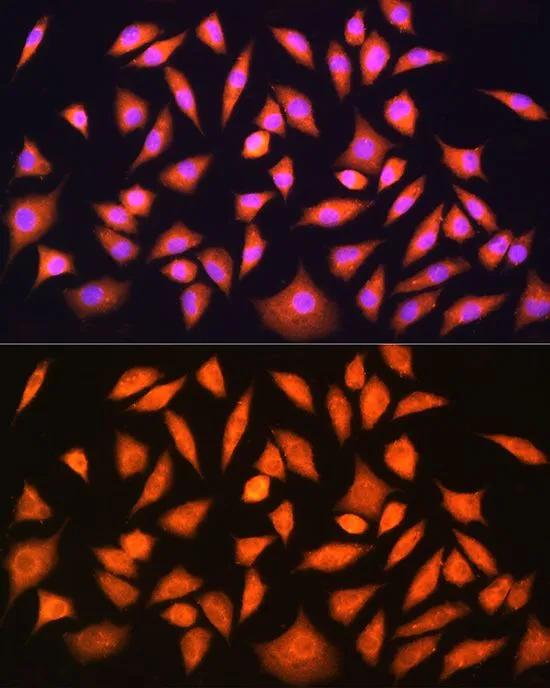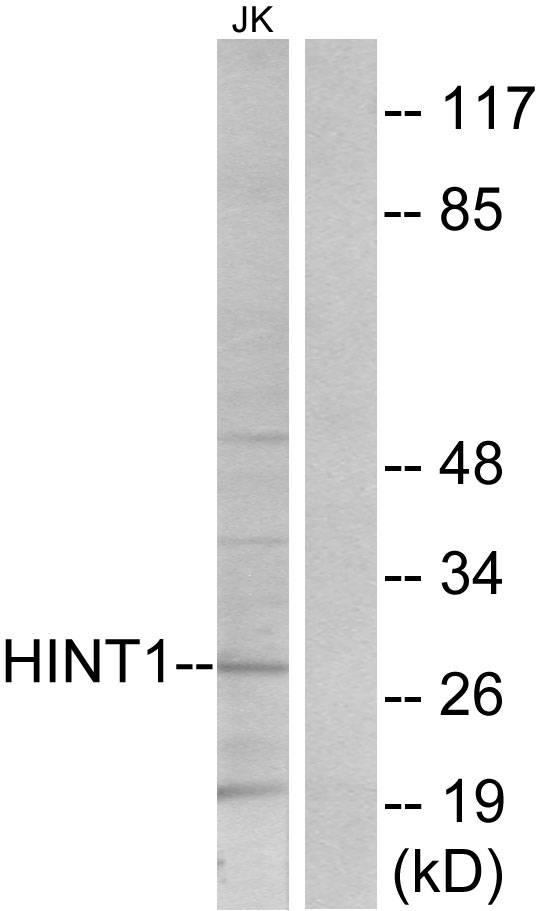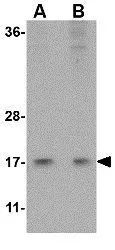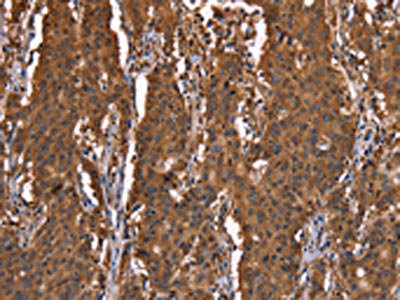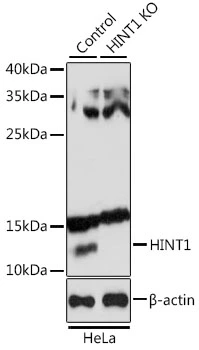
WB analysis of normal (control) and knockout (KO) HeLa cell lysate using GTX64971 HINT1 antibody. Dilution : 1:1000 Loading : 25microg per lane
HINT1 antibody
GTX64971
ApplicationsImmunoFluorescence, Western Blot, ImmunoCytoChemistry
Product group Antibodies
TargetHINT1
Overview
- SupplierGeneTex
- Product NameHINT1 antibody
- Delivery Days Customer9
- Application Supplier NoteWB: 1:1000 - 1:2000. ICC/IF: 1:50 - 1:200. *Optimal dilutions/concentrations should be determined by the researcher.Not tested in other applications.
- ApplicationsImmunoFluorescence, Western Blot, ImmunoCytoChemistry
- CertificationResearch Use Only
- ClonalityPolyclonal
- ConjugateUnconjugated
- Gene ID3094
- Target nameHINT1
- Target descriptionhistidine triad nucleotide binding protein 1
- Target synonymsHINT, NMAN, PKCI-1, PRKCNH1, adenosine 5'-monophosphoramidase HINT1, adenosine 5'-monophosphoramidase, desumoylating isopeptidase HINT1, epididymis secretory sperm binding protein, protein kinase C inhibitor 1, protein kinase C-interacting protein 1
- HostRabbit
- IsotypeIgG
- Protein IDP49773
- Protein NameAdenosine 5'-monophosphoramidase HINT1
- Scientific DescriptionThis gene encodes a protein that hydrolyzes purine nucleotide phosphoramidates substrates, including AMP-morpholidate, AMP-N-alanine methyl ester, AMP-alpha-acetyl lysine methyl ester, and AMP-NH2. The encoded protein interacts with these substrates via a histidine triad motif. This gene is considered a tumor suppressor gene. In addition, mutations in this gene can cause autosomal recessive neuromyotonia and axonal neuropathy. There are several related pseudogenes on chromosome 7. Several transcript variants have been observed. [provided by RefSeq, Dec 2015]
- Storage Instruction-20°C or -80°C,2°C to 8°C
- UNSPSC12352203

